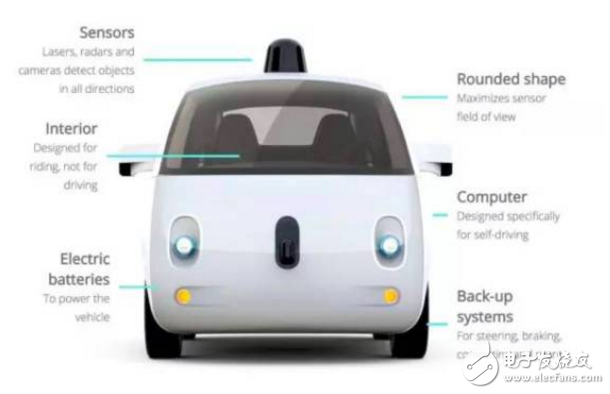Automated driving technology is primarily artificial intelligence. Artificial intelligence is equivalent to the driver's brain.
Others will also have some auxiliary technologies, such as laser measurement, acoustic measurement, motion sensor, GPS, etc., which is equivalent to human eyes, ears, nerves and so on.
At present, many of these auxiliary technologies are very mature, even far beyond humans, such as laser and acoustic wave measurement technology, which are currently used on very high-end models, and can be used for ACC automatic cruise. There is also night vision technology that can help drivers see people, animals and obstacles 100 meters away on the dark pages, which far exceed the human physiological limits.
But artificial intelligence is still in its infancy. In other words, the automatic driver's limbs and senses are now very good, even more than humans, but still lack a brain.
From the history of the development of autonomous driving technology, it should be traced back to 1975, when the use of computer vision technology for automated driving research and development. It was once interrupted in the middle, but now it has begun to study hot. Figure 1 shows the history of the current development of autonomous driving technology. From a legal and technical perspective, there are still many ways to go to actual commercialization. People expect autopilot to solve traffic accidents and environmental pollution problems, and are currently conducting collaborative research through industry, academia and research.
Europe has attached great importance to the development of autonomous vehicles and has been listed as a national key project. Some achievements have been made. The United States is using Google as a representative to study autonomous driving technology, doing autopilot experiments on the road, and also applying for a new autopilot license in Nevada. In order to achieve a safe and environmentally friendly logistics transportation system, Japan developed an automatic line-up technology for heavy trucks between 2008 and 2012. In 2014, the government implemented the actual use of autonomous vehicles (SIP-adus)
In general, unmanned systems generally have three modules.1. Environment awareness module
Driverless cars use sensors to sense environmental information. For example, cameras, lidars, millimeter-wave radars, and industrial cameras are used to obtain environmental information; GPS and the like are used to obtain information on the state of the vehicle body. Of course, you need to extract useful information through the algorithm.

2. Behavioral decision module
Behavioral decision-making refers to the process in which driverless cars generate driving decisions that comply with traffic rules based on road network information, acquired traffic environment information, and their own driving status.
In a human voice, a precise driving trajectory is planned, and then the driverless car can follow this trajectory.
3. Motion Control Module
The motion control module generates control commands for the throttle, brake, steering wheel and shift lever based on the planned travel trajectory and speed as well as the current position, attitude and speed.
Propane Generator,Natural Gas Generator,Generac Propane Generator,Honda Propane Generator
Changshu Herun Import & Export Co.,Ltd , https://www.herunchina.com
![<?echo $_SERVER['SERVER_NAME'];?>](/template/twentyseventeen/skin/images/header.jpg)